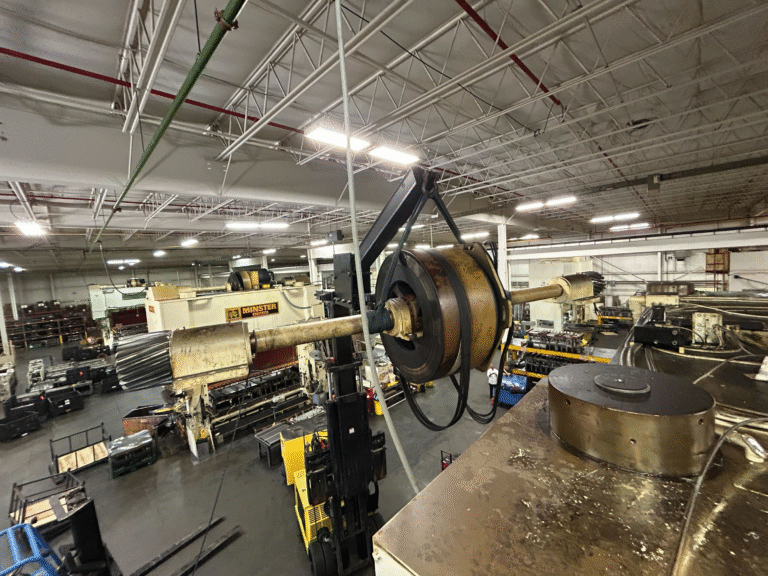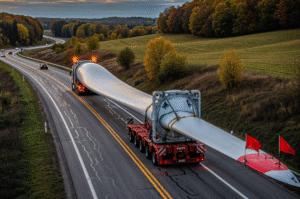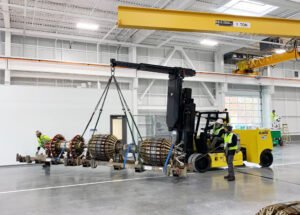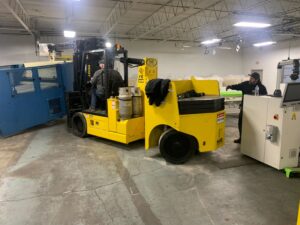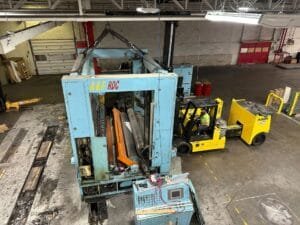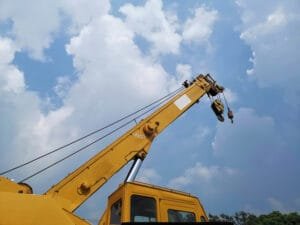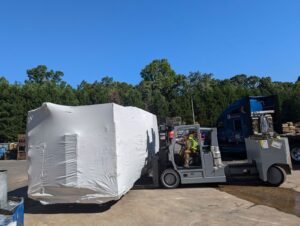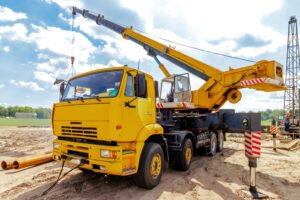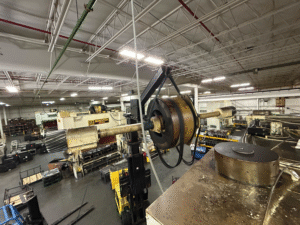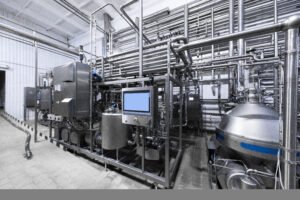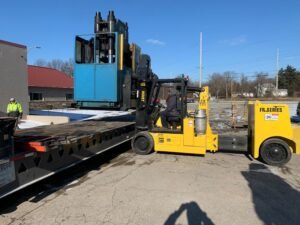Relocating heavy industrial machinery is one of the most complex and delicate tasks in the industrial world. The sheer weight, precision requirements, and interconnected systems of modern equipment mean that moving them is far more than just a transportation challenge. It is a project that demands specialized expertise, coordination, and precision. This is where millwrights play a pivotal role. Often overlooked outside industrial circles, millwrights are the backbone of machinery relocation projects. They possess the skills, training, and knowledge to dismantle, transport, reassemble, and align heavy equipment in ways that ensure minimal downtime and maximum operational efficiency once the machinery is back online.
This article explores the multifaceted role of millwrights in machinery relocation, examining their responsibilities, the techniques they use, and why their involvement is critical to successful industrial moves. We will also cover how millwright services intersect with safety, technology, and cost efficiency, making them indispensable in modern manufacturing and industrial operations.
Understanding the Millwright Profession
Origins of the Trade
The word “millwright” traces back centuries to the craftsmen responsible for building, maintaining, and repairing water mills and windmills. These early millwrights were problem-solvers who blended carpentry, masonry, and mechanical skills to keep the mills operational. As industries evolved during the industrial revolution, so too did the role of millwrights. They transitioned from maintaining mills to handling increasingly complex machinery in factories, plants, and industrial facilities.
Modern Millwrights
Today, millwrights are highly skilled tradespeople who specialize in the installation, dismantling, moving, repairing, and alignment of machinery. Their work encompasses everything from delicate calibration of CNC machines to the relocation of massive turbines. Unlike general laborers or equipment operators, millwrights are trained to work with tight tolerances, ensuring that machines operate efficiently once relocated. This precision is essential when a minor misalignment could lead to significant productivity loss or costly repairs.
Why Millwrights Are Essential in Machinery Relocation
The Complexity of Machinery Moves
Industrial machinery is not simply heavy—it is intricate. A single piece of equipment may weigh several tons, involve electrical systems, hydraulic lines, pneumatic controls, and delicate components that cannot withstand rough handling. Moving such a machine requires more than brute strength; it requires understanding the design, the load distribution, and the operational requirements. Millwrights combine technical expertise with practical experience to ensure machinery is relocated safely and accurately.
Minimizing Downtime
In industries where every minute of downtime translates into lost revenue, the ability of millwrights to streamline relocation is invaluable. They plan every step in advance, coordinating dismantling, labeling, packing, transport, reinstallation, and alignment. This careful orchestration reduces unnecessary delays, ensuring machinery is quickly back in service at its new location.
Safety and Compliance
Industrial relocations involve significant risks. Moving heavy equipment exposes workers to potential injuries and facilities to possible damages. Millwrights are trained not only in technical skills but also in safety protocols. They understand OSHA standards, lockout/tagout procedures, and rigging safety, ensuring that relocations comply with legal requirements while protecting workers and assets.
The Role of Millwrights in Each Stage of Machinery Relocation
Pre-Move Planning
Every relocation begins with thorough planning. Millwrights assess the machinery, the facility layout, and the logistical challenges of moving equipment through confined spaces, narrow corridors, or multiple levels. They create detailed plans that account for lifting points, rigging techniques, and the sequence of dismantling and reassembly.
Millwrights also collaborate with engineers and facility managers to identify potential risks. For example, relocating a press brake may involve disconnecting and securing hydraulic lines, while a CNC machine requires careful handling of computer systems. By anticipating these challenges, millwrights help avoid costly surprises during the move.
Dismantling and Rigging
One of the most technical aspects of relocation is dismantling machinery into manageable parts. Millwrights ensure that every component is labeled, cataloged, and packed properly for transport. Rigging skills come into play when lifting heavy sections with cranes, hoists, or forklifts. Proper rigging is essential to prevent accidents or damage, and millwrights bring specialized knowledge to this process.
Transport and Handling
While transport often involves truck drivers or logistics companies, millwrights oversee the loading and unloading of machinery. Their presence ensures that machinery is secured correctly for the journey. They also determine the safest method to move equipment through challenging routes, such as tight factory floors, doorways, or uneven terrain.
Reassembly and Installation
Once machinery reaches its destination, millwrights are responsible for reassembly. This process is far more than reconnecting parts; it requires careful attention to detail. Every bolt, belt, and bearing must be returned to its proper place. Millwrights also handle electrical hookups, hydraulic systems, and alignment, working closely with electricians and engineers to ensure seamless reintegration.
Precision Alignment
Perhaps the most defining aspect of millwright work is precision alignment. A machine that is even slightly misaligned can suffer excessive wear, reduced efficiency, or outright failure. Millwrights use tools such as laser alignment systems, micrometers, and dial indicators to achieve exact tolerances. This ensures that relocated machinery performs as reliably as it did before—or better.
Skills and Expertise of Millwrights
Mechanical Aptitude
Millwrights must possess deep knowledge of mechanical systems, from gears and shafts to motors and hydraulics. This mechanical aptitude allows them to understand how machinery functions and how best to dismantle and reassemble it without compromising integrity.
Problem-Solving Ability
No two relocation projects are the same. Each facility presents unique challenges, whether it’s limited access, unusual equipment design, or outdated machinery. Millwrights are natural problem-solvers who adapt to changing conditions, devising innovative solutions on the spot.
Precision and Patience
Unlike jobs where speed alone determines success, millwright work requires patience and precision. Even the smallest miscalculation in alignment can affect a machine’s performance. Millwrights combine steady hands with an eye for detail, ensuring every aspect of relocation is done correctly.
Communication and Teamwork
Machinery relocation is a team effort involving engineers, electricians, riggers, crane operators, and logistics personnel. Millwrights often serve as coordinators, communicating technical requirements and ensuring everyone works toward the same goal. Their ability to translate complex mechanical concepts into actionable tasks makes them central to project success.
Technology in Modern Millwright Work
Laser Alignment Systems
Gone are the days when millwrights relied solely on plumb bobs and levels. Modern millwrights use advanced laser alignment tools that allow them to achieve tolerances within fractions of a millimeter. This technology enhances both accuracy and efficiency.
CAD and 3D Modeling
Computer-aided design (CAD) and 3D modeling play a growing role in relocation planning. Millwrights can simulate moves in virtual environments, identifying obstacles before the project begins. This reduces risks and ensures smoother execution.
Digital Measurement Tools
From torque wrenches with digital readouts to vibration analysis equipment, millwrights leverage cutting-edge tools to diagnose and fine-tune machinery during relocation. These technologies not only improve accuracy but also provide data that can be archived for future maintenance.
Challenges in Machinery Relocation
Size and Weight
Industrial equipment often exceeds thousands of pounds, requiring specialized rigging and lifting. Millwrights must plan for the weight distribution, ensuring equipment is lifted and transported safely.
Confined Spaces
Factories and plants are rarely designed with relocation in mind. Millwrights often face the challenge of maneuvering large machinery through narrow spaces, requiring ingenuity and precision.
Time Constraints
Businesses cannot afford extended downtime. Millwrights are under constant pressure to complete relocations quickly without sacrificing quality. Their ability to balance speed and accuracy is what sets them apart.
Aging Machinery
Older equipment may lack documentation or be more fragile, making relocation especially challenging. Millwrights rely on their experience and problem-solving skills to handle these cases effectively.
The Economic Impact of Millwright Services
Machinery relocation is not just about moving equipment; it is about preserving productivity and profitability. Millwrights play a direct role in protecting these economic outcomes by:
-
Preventing costly equipment damage.
-
Ensuring machinery operates at peak efficiency post-relocation.
-
Extending the lifespan of equipment through proper handling and alignment.
For businesses, the involvement of millwrights is not an expense but an investment in long-term stability and operational success.
The Human Side of Millwright Work
Behind the technical skills and heavy lifting, millwrights bring a human element to relocation projects. They are craftsmen who take pride in ensuring machinery runs smoothly, often working long hours in challenging environments. Their dedication reflects in the trust industries place in them. Facilities rely on millwrights not just for technical tasks but also for reassurance that complex relocations will be completed safely and successfully.
Future of Millwrights in Machinery Relocation
As industries embrace automation, robotics, and digital systems, the role of millwrights will continue to evolve. Far from being replaced, millwrights will adapt, integrating advanced tools and technologies into their work. Their blend of hands-on skill and technological expertise will keep them at the forefront of machinery relocation for decades to come.
When it comes to machinery relocation, Alltracon stands out as Ohio’s trusted millwright and heavy equipment moving partner. With decades of experience, precision-driven crews, and advanced technology, Alltracon ensures safe, efficient, and reliable relocation. Businesses rely on their expertise to minimize downtime and keep operations running smoothly.
Conclusion
Machinery relocation is one of the most demanding tasks in the industrial sector. It requires more than trucks, cranes, or manpower—it requires the expertise of millwrights. From meticulous planning to precision alignment, millwrights ensure machinery is relocated safely, efficiently, and with minimal disruption to operations. Their role is not only technical but also strategic, bridging the gap between engineering design and real-world execution.
Without millwrights, machinery relocation would be riskier, costlier, and far less reliable. Their presence ensures that industries can continue to innovate, expand, and thrive, knowing that the backbone of their operations—their machinery—can be relocated with confidence.
